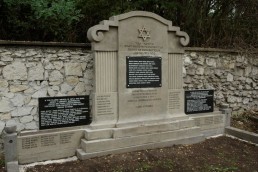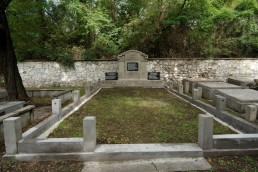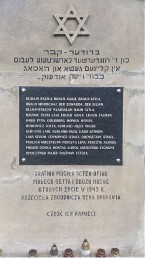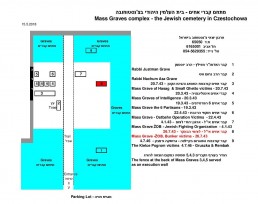The HASAG Victims' Mass Grave
by WIESŁAW PASZKOWSKI, Częstochowa Municipal Museum, History Documentation Centre
Edited: ALON GOLDMAN, Chairman of the Association of Częstochowa Jews in Israel English translation: ANDREW RAJCHER
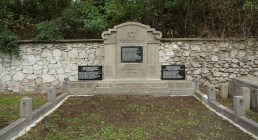
The inscription on this monument reads as follows:
The common monument to the hundreds of victims
of the Small Ghetto and the HAGA camp
whose lives, in 1943,
were criminally cut-short by the occupier.
May their memory by honoured.
In 2016, during the monument’s reconstruction, two black plaques werr added to both sides of the tombstone. On them are recorded additional names of victims who did not appear on the original tombstone and who, according to testimony given by survivors of HASAG in Czestochowa, were sent to their deaths on 21st July 1943. Because not all the names of the victims could be identified to be memorialised, these same plaques carry this additional epitaph in English and Polish:
IN THIS VERY PLACE, ON JULY 21, 1943,
GERMANS AND UKRAINIANS SHOT
OVER 200 JEWS OF CZĘSTOCHOWA.
WITH THE PASSING OF TIME, ONLY THESE INDIVIDUALS
ARE STILL REMEMBERED.
Here are their names:
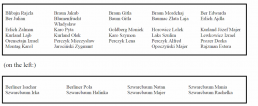
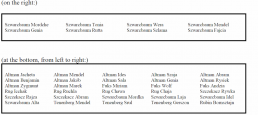
This monument was intended to commemorate the most well-known site of execution of Jews at the Jewish Cemetery. At least four hundred forced labourers from HASAG (Hugo Schneider Aktiengesellschaft, with its headquarters in Leizig) and from police warehouses were killed here. Meanwhile, only seventy-five names were placed onto the monument. The disproportion is huge. In order to understand this, it is necessary to refer to the history of the Jewish community in Częstochowa.
From the end of June 1943, following the liquidation of the forced labour camp in Częstochowa, the so-called “Small Ghetto”, all the Jewish labourers, still alive, were relocated to prefabricated camps in the HASAG-Pelcery plant and in the grounds of the steel-mill in HASAG-Raków. There was also a large group employed in the police warehouses on ul. Garibaldiego. There, they sorted, and prepared for transport to the Reich, goods that had been looted from Jews in the autumn of 1942, during the liquidation of the Częstochowa ghetto and the deportation of 40,000 individuals to the death camp in Treblinka. The mikvah (ritual bath) at ul. Garibaldiego 18 served as barracks for the last fifty Jewish policemen and their families. In July, they were transferred to HASAG-Pelcery.
On 19th July, the German meisters in HASAG-Pelcery attempted to put together a list of non-essential workers. In the face of resistance from those at risk, the attempt was unsuccessful. For this reason, under the direction of Director Lüht, engineers and meisters, in the presence of Bernard Kurland, who was the Jewish leader of the labourers group, conducted the selection at night. All the men and women were required, in ranks, to pass by the Germans. Victims were pulled out of the lines, placed into the factory compound outside the camp and then locked in the building’s basements, which served as the camp’s detention facility. After the selection, Hauptmann Degenhardt, who was in the facility and supervised the operation from a distance, ordered that Bernard Kurland be handed over and that he be added to the group locked in the basements.
On the following day, Degenhardt announced, to the labourers in the police warehouses, that anyone who wished could join their family in HASAG-Pelcery. More than one hundred individuals came forward and they were loaded onto trucks. They were transported to the basements in the facility and locked up with the others. Later, they were joined by Jewish policemen and their families. Only the wife of policeman Kohn hid, with her son, under the factory roof and thus avoided being imprisoned.
The victims were then pulled out of the basement and loaded onto vehicles. Some desperate prisoners put up strong resistance, but they were stunned with hammer blows, restrained and then thrown onto a vehicle. After being transported to the cemetery, they were all shot.
After comparing the inscription with data contained in the Central Database of Holocaust Victims at Yad Vashem, it must be stated that the victims of the selection and execution were those named in the upper table.
The remaining individuals are family members commemorated by their relatives who had survived the Holocaust. Was this only due to the difficulty in establishing the names of the victims? That would be understandable, because no Jews could have observed the execution. What is known, however, is that those, who were detained during the selection, never returned to the camp. Let us not be confused by the description robotnicy (workers/labourers). Often, the intelligencia would claim to be robotnicy in order to survive. Apart from reducing the workforce and those being fed by the Germans, a selection was aimed at finding people who lacked physical fitness or who were poor workers, those who lacked qualifications or those who pretended to be tradesmen. There, they tried to carry out selections according to work positions. So, it had nothing to do with people who were poor or who were insignificant within the Jewish community.
A large group of victims were Jewish policemen and their families. During their several years of work, especially in 1942 and 1943, they were sadly inscribed into the life of their community. There were few people who were not harmed due to them. They spied on their fellow Jews. They caught Jewish children and the elderly. They were almost all the “tested” helpers of the German police, along with their commander Herman Parasol. For the most part, they were not monsters. However, they were under constant pressure from their German superiors. Their names were well-known by many people. However, after the War, they were surrounded by disdainful silence.
The rest of the inscriptions on the monument are family memorials, most likely not related to the events of 20th July 1943.
Because the Jewish religion forbids the performing of exhumations (this can only be carried out in exceptional circumstances), it was carried out under duress. It was impossible to distinguish one from the other. Their names were omitted from the monument and what is not mentioned is that heroes are resting next to “traitors”. The Polish party authorities also spoke on this subject, ultimately forbidding the naming of Jewish policemen.
A quite typical example is that of Bernard Kurland, lying next to Herman Parasol – the most well-known of the murder victims. Although it is known that he is buried in this mass grave, his name was placed on the neighbouring grave where, amongst other members of the Jewish intelligencia, his family, who were killed 20th March 1943, are buried. Bernard Kurland avoided death at that time, escaping from the vehicle which was carrying Jews to the place of execution. It should be remembered, however, this case may also be controversial. In the grave, next to Jewish doctors, engineers, lawyers and their families, lie the last members of the Judenrat, the first commander of the Jewish Police Maurycy Galster and his son Jerzy who also served as a policeman.
In the creation of these graves-monuments, we see a strong interweaving of different motivations shown on the part of their creators. In the first instance, attempts were made to combine and to reconcile the various reasons and interests of political groups and of families. With the third monument, we are dealing with the omission of an entire group of victims, denying them the right to be remembered and natural justice when it comes to an ordinary grave. The formula in the creation of the monument created some limitations, but that formula was used inconsistently.
The monument was badly affected by the actions of time and people. Already, in the beginning (probably in the 1950’s), the central plaque was lost. The one that appears in the 1960’s differs in the layout of the text. Later, the cement joints and individual elements of the monument begin to deteriorate. Again, the central plaque is lost. In 2016, it was reconstructed during the renovation of the monument. A further plaque is added containing the names of victims, not mentioned up to that time.
Maysia Parasol
Jakub Rajcher
Jacheta Rajcher
Zysla Mariema Rozenblat
Roman (Abran Pinkus) Szładowski
Frania Frajda Szladowska
Juzio Josef Szladowski (lat 3)
Michał Szperling
Nechuma Szperling
Franciszka Szpic
Dawid Sztybel
Zygmunt Szydłowski
Pola Szyłowska
Inz. Szwarc
Dr Rachela Wajsberg
Zofia Wigdor
Fajga Beatus
Jakub Epsztajn
Genia Epsztajn
Mieciuś Epsztajn (lat 4.5)
Liliulsia Epsztajn (lat (2.5_
Jósek Fajerman
Sara Fajerman
Hana Feldman
Jerzy Galster
Moszek Gonzwa
Fela Fagla Gonzwa
Tauba Grynbaum
Jósek Jung
Szymon Kohn
Józg Kornbrot
Paulina Linka Kornbrot
Bernard Kurland
Icek Kurland
Mania Kurland
Józef Kurland
Chaja Hela Kurland
Leon Lajb Kurland
Henryk Hersz Parasol
THE ORIGINAL MONUMENT
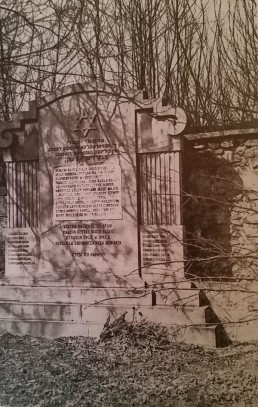
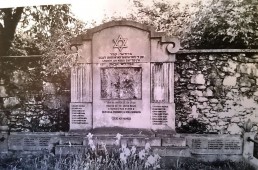
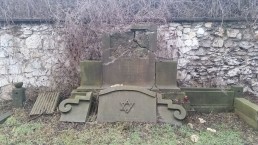
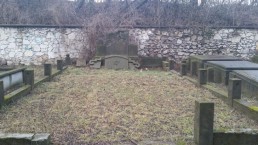
AFTER RESTORATION IN 2016
